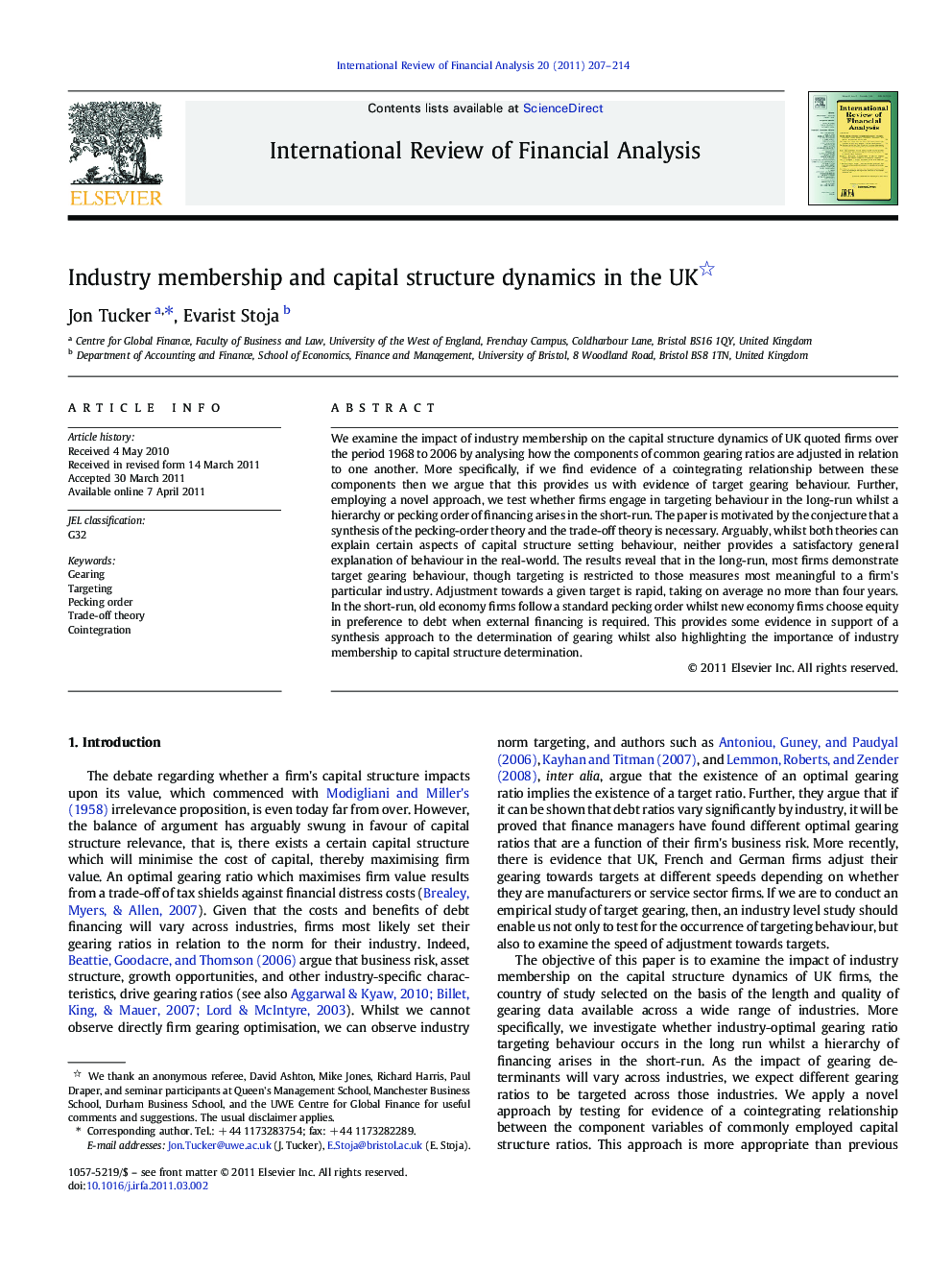| Article ID | Journal | Published Year | Pages | File Type |
|---|---|---|---|---|
| 5085170 | International Review of Financial Analysis | 2011 | 8 Pages |
Abstract
We examine the impact of industry membership on the capital structure dynamics of UK quoted firms over the period 1968 to 2006 by analysing how the components of common gearing ratios are adjusted in relation to one another. More specifically, if we find evidence of a cointegrating relationship between these components then we argue that this provides us with evidence of target gearing behaviour. Further, employing a novel approach, we test whether firms engage in targeting behaviour in the long-run whilst a hierarchy or pecking order of financing arises in the short-run. The paper is motivated by the conjecture that a synthesis of the pecking-order theory and the trade-off theory is necessary. Arguably, whilst both theories can explain certain aspects of capital structure setting behaviour, neither provides a satisfactory general explanation of behaviour in the real-world. The results reveal that in the long-run, most firms demonstrate target gearing behaviour, though targeting is restricted to those measures most meaningful to a firm's particular industry. Adjustment towards a given target is rapid, taking on average no more than four years. In the short-run, old economy firms follow a standard pecking order whilst new economy firms choose equity in preference to debt when external financing is required. This provides some evidence in support of a synthesis approach to the determination of gearing whilst also highlighting the importance of industry membership to capital structure determination.
Related Topics
Social Sciences and Humanities
Economics, Econometrics and Finance
Economics and Econometrics
Authors
Jon Tucker, Evarist Stoja,
